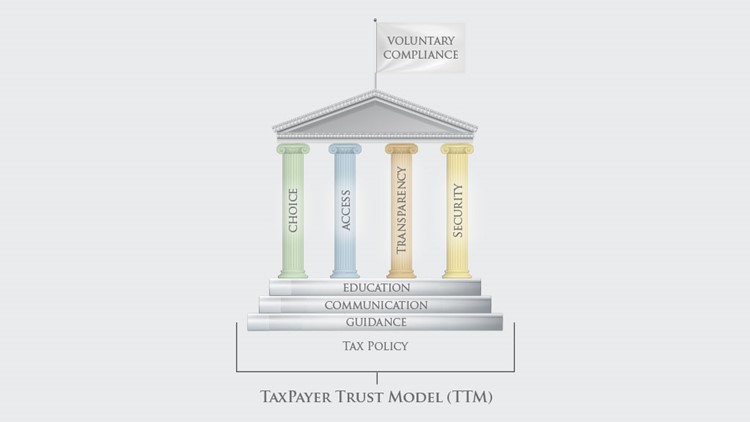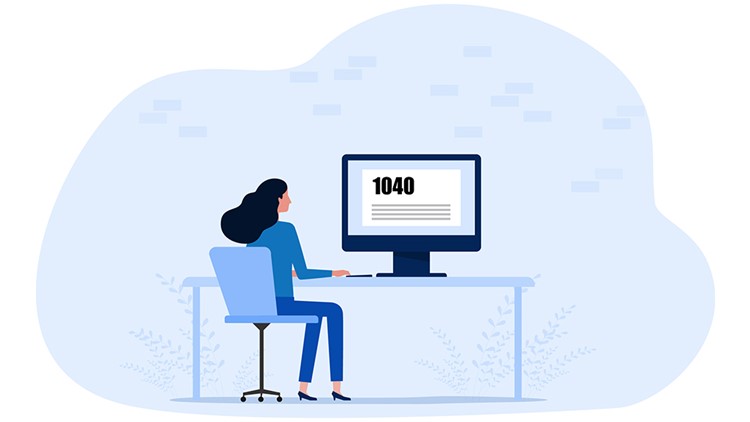by | Jul 19, 2023 | Tax Tips and News
A key Internal Revenue Service advisory committee has issued its recommendations for 2023, in an effort to keep the IRS – and Congress – on point with improvements to the nation’s income tax filing system.
The Electronic Tax Administration Advisory Committee (ETAAC) is chaired by Jared Ballew, Vice President of Government Relations at Taxwell Representing Drake Software and TaxAct. ETAAC’s just-released annual report carries 26 recommendations aimed at improving electronic tax filing.
Of the 26 items on the committee’s action list, 21 are aimed at the IRS, three are addressed to both the IRS and Congress, and two are meant for Congress.
Some of the 2023 recommendations have their roots in previous ETAAC reports, such as the appeals to Congress to provide timely tax legislation and to pass consistent funding packages for IRS operations and administration.
Other recommendations, meanwhile, look to the future, asking the IRS to make modernization of their processes and equipment a priority, along with improving its online search engines.
Some of the remaining recommendations include:
- Making the IRS’ expansion of the Online Account toolset a priority.
- Prioritizing e-filing of 94X returns and improving processing of duplicate 94X returns.
- Updating Form 1099-K (and its education materials) to allow for easy compliance.
- Making tax information documents available digitally in real-time, so taxpayers can easily export tax data into third-party software.
- Speeding up processing of returns, whether electronically filed or paper.
- Asking the IRS and Congress to do more to regulate paid tax preparers and take steps in the areas of incompetent or unscrupulous conduct.
- Stressing the IRS should come up with ways to deal with higher attrition of its workforce and increasing demands for customer service.
- Asking the IRS to provide timely guidance on federal and state laws that can have an impact on tax administration.
An introductory letter in ETAAC’s 84-page Report to Congress says the committee worked hard to present a report that was balanced yet comprehensive. It uses what the committee calls “the taxpayer’s journey” to describe the various facets of the income tax process. ETAAC also developed a new model to aid in decision-making processes for both policymakers and tax administrators.
“ETAAC has established the Taxpayer Trust Model (TTM) in an effort to standardize, build and maintain high levels of trust in the tax system and to increase compliance. We believe the TTM framework can serve legislators, tax administrators, and stakeholders in their decision-making processes.”
The report also notes that a number of recommendations made in the committee’s previous 2022 report remain unrealized and are still in need of action from the IRS as well as Congress.
The members of ETAAC come from sectors throughout the tax community, representing individual and business taxpayers, tax professionals and preparers, tax software developers, providers of payroll services, the financial industry and state and local governments.
The committee frequently works with the Security Summit, which is a panel made up of IRS officials, state taxing agency representatives and tax industry partners all working together to fight tax-related identity theft and other cybercrimes.
– Story provided by TaxingSubjects.com
by | Jun 13, 2023 | Tax Tips and News
Weeks of record flooding and mountain snows brought on by an “atmospheric river” in California resulted in a federal disaster declaration from the Federal Emergency Management Agency (FEMA). While disaster victims received tax relief from filing and payment deadlines, some were confused after receiving notices from the Internal Revenue Service.
Why are California disaster victims confused?
When taxpayers fail to pay federal tax due by the deadline, the IRS is required by law to generate a Notice CP14 mailout telling recipients they have 21 days to resolve their balance. Some California disaster victims were reportedly confused after receiving the notice, believing they had additional time to file returns and pay any tax due.
(Spoiler: they do.)
While disaster victims did receive Notice CP14, the IRS noted in a recent statement that the mailings also included a special insert reminding these taxpayers that the previously issued tax relief still applies. However, the agency apologized for the confusion, stressing that storm victims who received the Notice do not need to contact the IRS or their trusted tax professional.
How can I learn more about IRS notices and installment arrangements?
DrakeCPE provides courses covering a variety of tax topics, including two that can help tax professionals better serve clients who have received IRS notices or are unable to pay all taxes owed in one lump sum:
For information about available courses, visit DrakeCPE.com.
Source: IRS statement on California mailing of balance due notices
– Story provided by TaxingSubjects.com
by | Jun 9, 2023 | Tax Tips and News
A new wave of advertising is churning up interest in a tax credit intended to help businesses and non-profits that tried to retain their employees during the COVID-19 pandemic. However, the ads on TV and radio, online, and even direct mail leave out a critical fact: most of the promoters’ clients won’t qualify for the credit.
That’s where you come in.
As a trusted tax professional, you are often the source of truth for your clients. You may be getting questions about ads touting big payoffs for claiming the Employee Retention Credit (ERC). If these stories sound too good to be true, that’s because they are.
We want you to have all the facts, so your clients can make the right decisions.
Be wary of unrealistic claims for the ERC
To hear one of these ads, you’d think virtually anyone can claim the ERC: businesses, non-profits and individuals alike. In addition, they say “you have nothing to lose!” Both these statements are false.
True, the ERC is a refundable credit, but it is intended for businesses that continued to pay workers even while they were shut down during the pandemic. The credit also applies to businesses that had significant declines in gross receipts during the specified eligibility periods. And no matter what the ads say, individuals are not eligible for the ERC.
As far as filers having “nothing to lose,” consider that anyone who improperly claims the ERC has to pay it back—many times along with penalties and interest. The IRS cautions businesses and tax-exempt organizations that they could find themselves in a much worse cash position if they have to pay back the credit than if they never claimed it in the first place.
What are the requirements for claiming the ERC?
Companies can claim the credit on an original or amended employment tax return for qualified wages paid between March 13, 2020, and Dec. 31, 2021.
To be eligible, employers must have:
- Carried out a full or partial shutdown of operations as ordered by an appropriate governmental authority because of Covid-19 during 2020 or the first three quarters of 2021;
- Experienced a significant decline in gross receipts during 2020 or during the first three quarters of 2021, or;
- Qualified as a recovery startup business for the third or fourth quarters of 2021.
How can clients know if an offer could be a scam?
First, the offer comes through an advertisement or an unsolicited phone call. Either may promote an “easy application process.”
Second, promoters will often claim they can determine the filer’s ERC eligibility within minutes, but charge a large up-front fee just to claim the credit. Many times, promoters will claim a business qualifies for the credit without any discussion of the client’s tax situation.
Finally, promoters’ fees tend to be based on the amount of ERC being claimed.
You are the best defense against ERC scams
The IRS says you, the trusted tax professional, have the skills needed to correctly determine eligibility for the Employee Retention Credit and to calculate the correct credit amount. These third-party promoters have only profit as their motive and cannot be trusted to act in taxpayers’ best interests.
To report abuse of the Employee Retention Credit, submit a Form 14242, Report Suspected Abusive Tax Promotions or Preparers, mailing or faxing the completed form along with any supporting materials to the IRS Lead Development Center in the Office of Promoter Investigations at:
Internal Revenue Service Lead Development Center
Stop MS5040
24000 Avila Road
Laguna Niguel, California 92677-3405
Fax: 877-477-9135
Source: IR-2023-105
– Story provided by TaxingSubjects.com
by | May 26, 2023 | Tax Tips and News
The Internal Revenue Service is moving ahead with a program that will offer taxpayers a new option for filing their 2023 returns next year. Dubbed “Direct File,” a scaled-down version of the full program will allow taxpayers to file online for free, using an IRS-run website.
The move to online filing through the IRS is rooted in the Inflation Reduction Act (IRA). The IRA mandated that the Treasury Department and the IRS look into whether free online filing is possible through the IRS and what the agency needs to make it happen.
The IRS broke its fact-finding effort into three pieces.
1. Do taxpayers want it?
A number of sources were united to acquire and analyze public opinion about the project. The IRS used its Taxpayer Experience Survey (TES) to poll thousands of taxpayers on the issue. Next, results from an independent MITRE Corporation survey were pulled in. Then, independent analysis by New America and Professor Ariel Jurow Kleiman on the concept was added to the mix.
An IRS report to Congress on the Direct File initiative determined taxpayer interest in the project is sufficient to move forward.
2. Are there costs to implementing Direct File?
While the IRS report doesn’t give hard figures, it does caution Congress that building and executing an effective Direct File online filing site would require a sustained investment by lawmakers. Given the difficulty the agency has faced in receiving requested funding, this could prove to be a roadblock for the future of the program.
3. Is a free online filing portal even possible for the IRS?
The congressional report says creating a successful online filing portal is feasible despite presenting technical challenges for operation and administration. According to the report, the agency is ready and able to meet these challenges.
The IRS is embracing a proven method of testing for its new project: start small and work your way up. To that end, the agency intends to field its Direct File pilot program in 2024 with a limited scope so technicians can more easily track its operation. This approach will also allow system administrators to see if the pilot project adequately meets the customer support and technology needs of taxpayers before the system is scaled up.
In the short term, the IRS plans to meet with stakeholders in the tax industry over the coming months to hear concerns and offer some answers. According to the agency, more details on the Direct File program will soon be available.
Source: IRS submits Direct File report to Congress; Treasury Department directs pilot to evaluate key issues
– Story provided by TaxingSubjects.com
by | May 5, 2023 | Tax Tips and News
The Internal Revenue Service says it has almost $1.5 billion in leftover tax refunds for 2019 taxpayers who haven’t filed—but the time remaining to claim this money is slipping away.
According to the agency, as many as 1.5 million taxpayers could benefit from the unclaimed refunds, but they must file a tax year 2019 return to get it. The median refund is calculated to be $893.

Expanded three-year filing window is about to close
Taxpayers usually have three years in which to file and claim a refund. After that point, the money goes into the government’s pocket. Because of the COVID-19 pandemic, the usual deadline for filing 2019 returns for refund was pushed back to July 17, 2023. Notice 2023-21 has more details.
The IRS has broken down the list of refunds on a state-by-state basis, providing some insight into which parts of the US still need to file tax year 2019 returns:
- Texas leads the list in terms of total potential refunds. Lone Star State taxpayers could pick up more than $142 million if they file.
- California has the highest estimated number of taxpayers who need to file to get it: 144,700.
- New Hampshire, with roughly 6,900 affected taxpayers, has the highest median refund in the group: $974.
- Vermont brings up the rear with just 3,100 estimated taxpayers who could benefit, with estimated refunds totaling just over $3 million.
Things to consider before filing
It’s worth noting that filing could have benefits beyond just the outstanding tax refund. A number of low- and moderate-income filers may be eligible for the Earned Income Tax Credit or EITC. In 2019, the EITC was worth as much as $6,557 to qualified taxpayers.
Despite four years passing, there are still options available for tracking down the various documents needed to file. Forms W-2, 1098, 1099, and 5498 may be available through the taxpayers’ employer, bank or other institution. The Get Transcript Online tool on IRS.gov can help taxpayer quickly track down forms that might be unavailable from other sources.
Taxpayers who need to file a paper Form 4506-T can request a “wage and income transcript” showing data from their W-2, 1099, 1098, and other financial forms. Keep in mind, though, this option is by far the slowest, taking weeks for the IRS to send the results.
As with all refunds, it’s worth remembering that the amount the taxpayer actually gets may be smaller than expected, depending on the circumstances. This decrease in expected refund is often due to 2019 tax refunds being held back to pay tax owed if a taxpayer hasn’t filed for 2020 and 2021. Additionally, a tax refund could be used to pay any tax debt owed to the IRS or state tax agency or offset unpaid child support and past-due student loan debt.
Source: IR-2023-79
– Story provided by TaxingSubjects.com
by | Apr 24, 2023 | Tax Tips and News
Every year, CPA Practice Advisor asks readers to vote on the technology—both software and hardware—they trust the most. Just one day before the individual filing deadline, the publication announced the results of its nineteenth annual Readers’ Choice Awards, which included more than 5,000 respondents.
Just like years past, thousands of customers recognized Drake Software as a reliable partner during filing season. In addition to claiming the same five categories as last year, our solutions also took first place for website-builder, CPE-provider, and hosting-solution services.

Which categories did Drake Software win?
Federal/State Income Tax Preparation: Drake Tax®
Tax professionals need a reliable professional tax preparation solution—especially when navigating unprecedented challenges like a once-a-century pandemic. Since CPA Practice Advisor began hosting the Readers’ Choice Awards, Drake Tax has proven to be a dependable partner for paid tax return preparers: winning the Federal/State Income Tax Preparation category 18 times. Learn more about Drake Tax.
Tax Planning Systems: Drake Tax Planner™
Being able to quickly compare clients’ current tax situation with other possible scenarios—from having a child to changing jobs—helps you easily provide tax planning services. Just like last year, the Drake Tax Planner won the Tax Planning Systems category. Learn more about the Drake Tax Planner.
1099/W-2 Compliance: Drake Accounting®
Tax professionals who have small business clients commonly provide payroll services. Drake Accounting is our fully integrated bookkeeping solution, and it includes a number of essential payroll features, including live and after-the-fact payroll, multi-location payroll, and e-filing for Forms 94x, W-2, W-2G, W-3, and 1099. Learn more about Drake Accounting.
Client Portals: Drake Portals™
While remote tax preparation initially gained traction during the pandemic, many have now embraced the convenience of using Internet-based platforms to facilitate tax preparation services. Drake Portals allows tax professionals to securely exchange client tax documents, gather signatures, collect payments, back up files, and send instant messages. Learn more about Drake Portals.
Document Management & Document Storage: Drake Documents
Serving as the Drake Tax- and Drake Portals-integrated document management solution for client records and returns, Drake Documents also produces PDF images, password protects files, and watermarks documents as final, review, or draft. Learn more about Drake Documents.
Website Builders & Services for Accounting Firms: Drake Software SiteDart Hosting
SiteDart Hosting specializes in building websites for tax and accounting professionals, so you don’t need any experience with HTML to have a site with features like a financial calculator, tax-rate information, tax-return checklists, and federal and state refund searches. Learn more about SiteDart Hosting.
Favorite CPE Provider: DrakeCPE®
In addition to keeping tax pros informed about the latest tax and industry updates, continuing professional education is required to maintain myriad professional designations. For some, finding a reputable CPE provider that satisfies their educational needs and fits their busy schedules can be challenging. DrakeCPE offers more than 50 courses in a variety of formats, including self-study, on-demand, and live webinars. Learn more about DrakeCPE.
ASP/Hosted Solution Providers: Drake Software Hosting Powered by Right Networks
Whether operating a multi-site firm or needing anytime, anywhere access to your tax preparation applications, hosting software on a platform like Right Networks provides the convenience of browser-based applications with the user experience of local installs. In addition to accessing Drake Tax and Drake Accounting from any location with high-speed Internet, your data is stored in Tier 4 data centers that run 90-day, nightly rolling backups. Learn more about Drake Software Hosting Powered by Right Networks.
How did our partners perform?
Other Workflow Tools: GruntWorx®
The frenetic pace of filing season has led many tax professionals to seek workflow solutions that can help save their practice time. GruntWorx products automate a number of tasks, from organizing client documents to entering data in returns, and they are integrated with Drake Tax. Learn more about GruntWorx.
Tax Document Automation: GruntWorx Populate
Populate saves time spent on data entry by extracting and inserting information from scanned client tax documents into many professional tax preparation applications. Integration with Drake Tax makes this process even easier, since scanning, printing, and file management can all be handled in Drake Documents.
Tax & Accounting Research Systems: TheTaxBook™
It’s essential that you have the tax information you need when you need it, especially during filing season. TheTaxBook WebLibrary Plus is a deep tax research database that is integrated within Drake Tax. Learn more about TheTaxBook.
Source: CPA Practice Advisor 2023 Readers’ Choice Awards
– Story provided by TaxingSubjects.com








